Chuck Erikson is the self-proclaimed “Duke of Pearl.” And for good reason: If you own an acoustic or electric guitar with mother-of-pearl dots or pearl-inspired ornamentation, there’s a good chance that the Duke and his company supplied the guitar’s maker with its inlay materials. You may have seen the Duke at music festival or read about him in the Fretboard Journal #21. Once you meet him and see him adorned in his Duke regalia (yes, we’re serious), he’s unmistakable.
Needless to say, Erikson is a legendary figure in the world of guitarmaking. So when he writes about his musical instrument projects, we tend to take notice. And his latest project is simply amazing: a steampunk five-string banjo that he’s dubbed “Mad Max.”
Wikipedia defines Steampunk as “a genre which originated during the 1980s and early 1990s and incorporates elements of science fiction, fantasy, alternate history, horror, and speculative fiction. It involves a setting where steam power is widely used — whether in an alternate history such as Victorian-era Britain or ‘Wild West’-era United States, or in a post-apocalyptic time…” And Erikson’s banjo is a creation that would do both John Hartford and kilt-wearing Zombie hunters proud. Nearly every square inch of this now 15 pound-plus banjo has something funky, cool and imaginative added onto it. Heck, it even lights up!
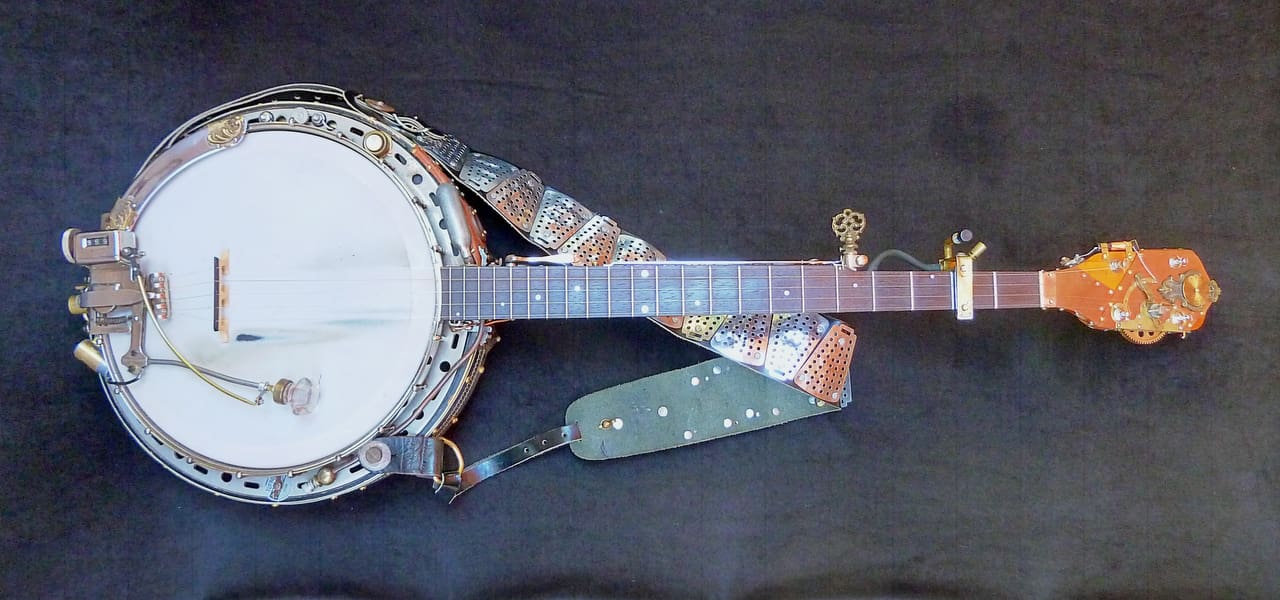
The original instrument holding it all together is a vintage Kay 5-string banjo, modified with Fender Concert Tone archtop tone ring, a 1/4″ x 3/4″ solid neck bar, and a 26 1/2″ scale rosewood fingerboard incorporating graduated fret sizes (largest at first position, smallest up the neck). The strap appears to be riveted with parts from a broccoli steamer.
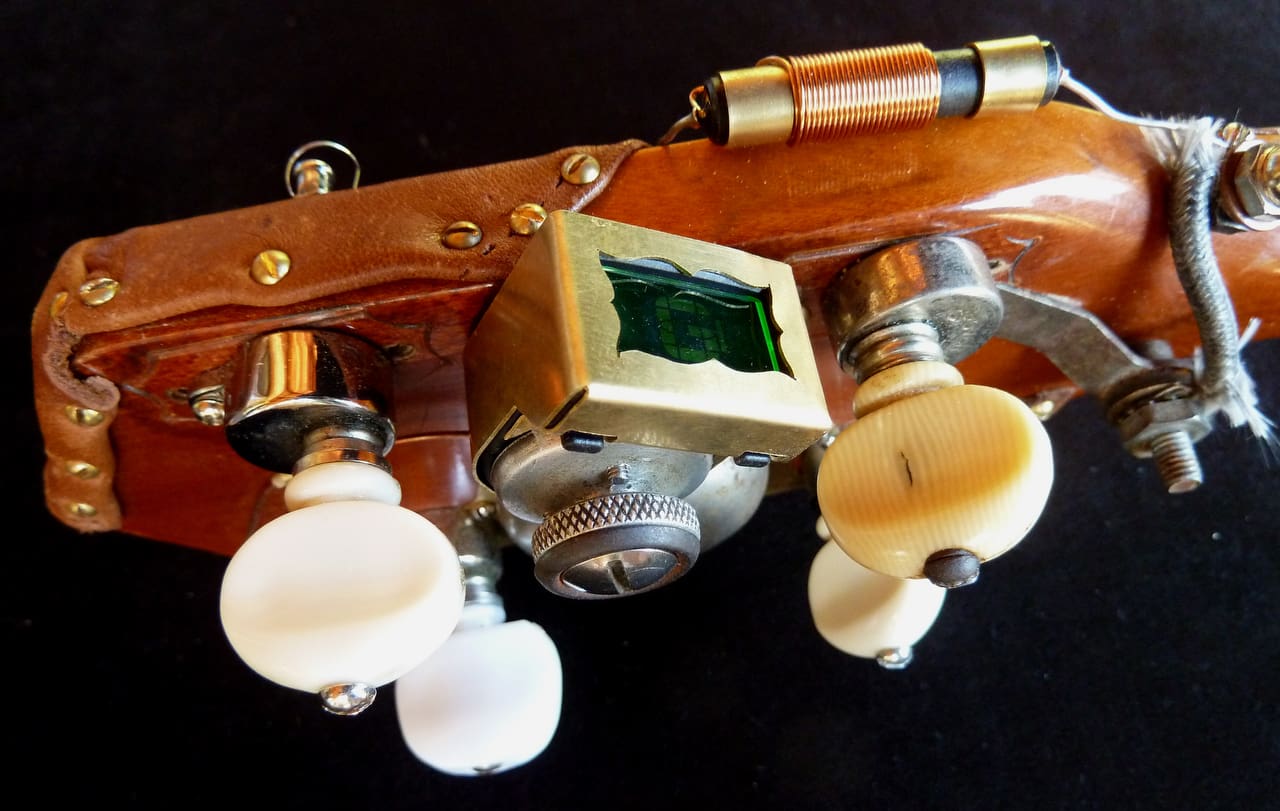
The headstock features a very early Planet Wave mini tuner hard-mounted to peghead, one of the few practical additions to this instrument.
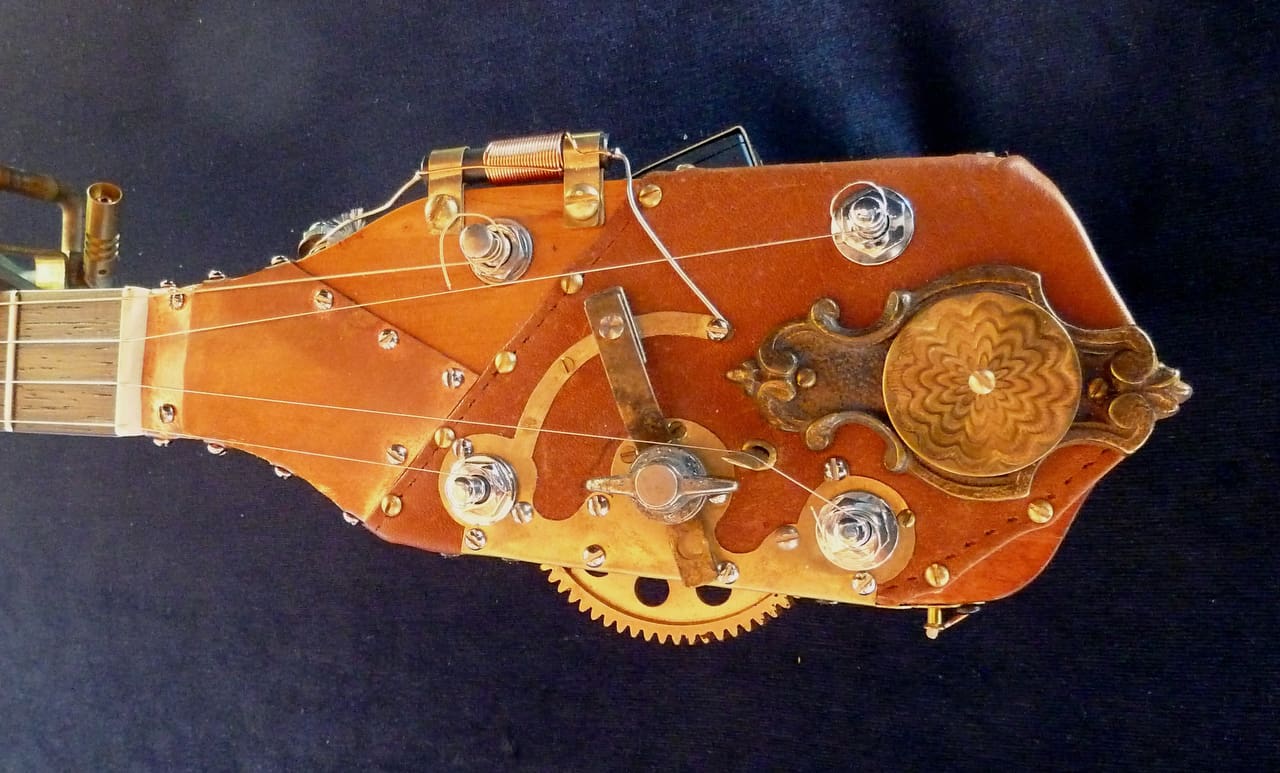
From this view of the headstock, we can see where things get interesting. “[It has] an infinitely variable gear-driven tuning valve, activated by rubbing the gear on an adjacent fiddle player,” Erikson notes. “Very rare holographic ‘Rose Engine’ ornament at top was ‘engine turned’ on an 1840’s Holtzapffel lathe. It was intended to mesmerize hesitant listeners during parlour recitals.”

Moving down the instrument, we can see what Erikson describes as the “Aetherized thumb check choke capo d’aster.”
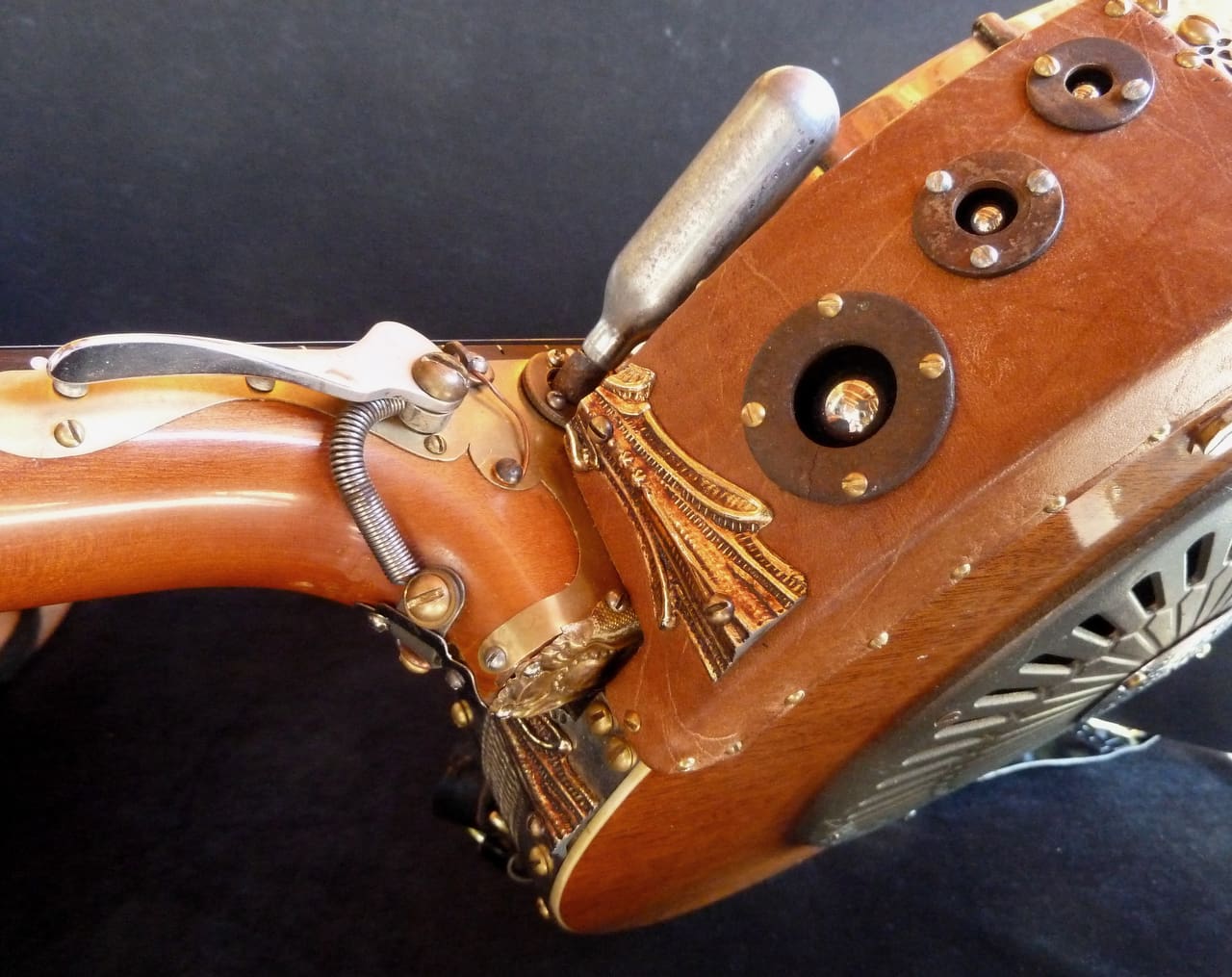
The body of the banjo features “recessed and sequentially harmonized Tone Balls, first introduced by the old Liberty Banjo Company but now extremely rare. Push the mother of pearl doorbell button on the flange and they light up.”

The back of the banjo features a “resonator grill with 1931 Singer access plate for vintage Scruggs Filter circuitry controls.”
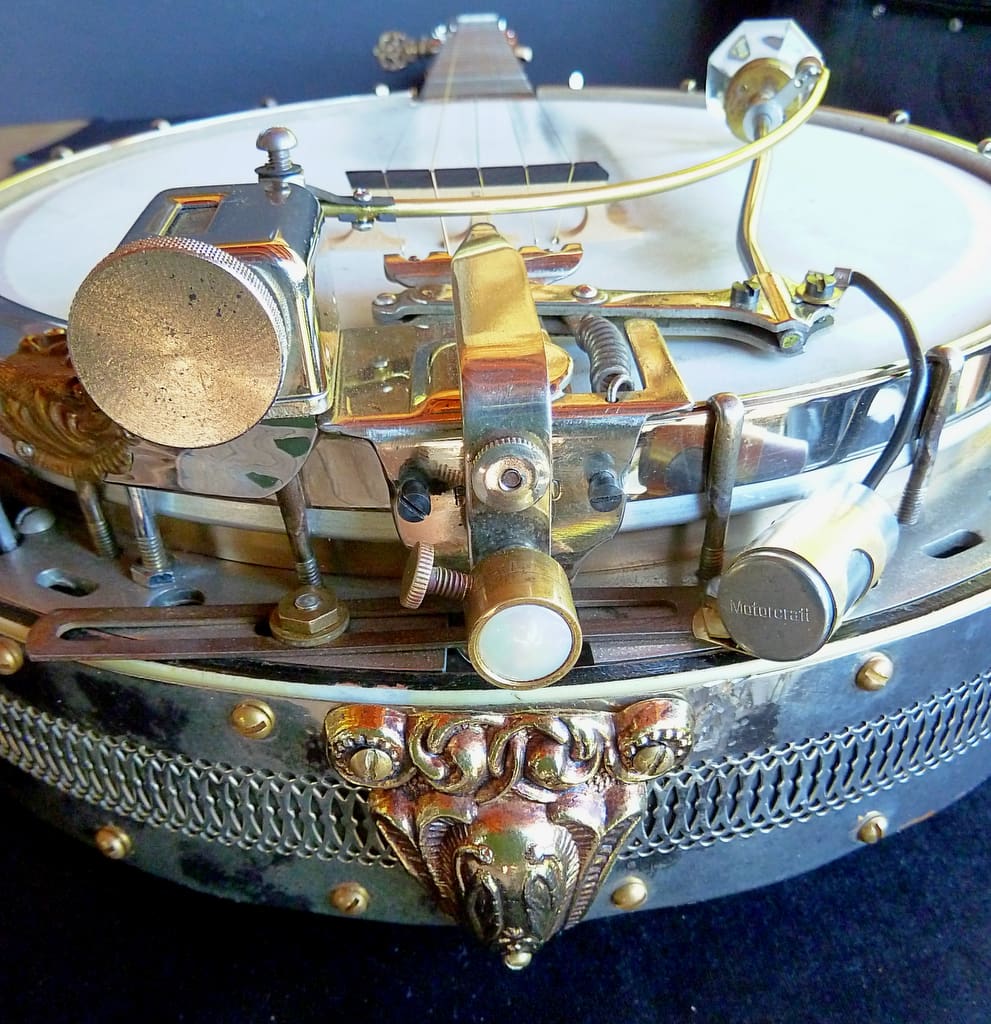 I’m not even sure where to begin describing the tailpiece. Chuck describes it this way: “Original vibrato tailpiece is one of only two known to have survived Europe’s so-called Great Banjo Scare in the late 19th Century. The other is in the collection of famed banjo maker Renee Karnes, inherited from her mentor, the late Henry Lea.”
I’m not even sure where to begin describing the tailpiece. Chuck describes it this way: “Original vibrato tailpiece is one of only two known to have survived Europe’s so-called Great Banjo Scare in the late 19th Century. The other is in the collection of famed banjo maker Renee Karnes, inherited from her mentor, the late Henry Lea.”
The best thing about this banjo? It actually sounds good. Here’s YouTube evidence from a recent bluegrass festival.
Chuck created this banjo in around three weeks, while he overcoming a spell of depression. He says that “taking things out on a lowly banjo did the trick and I’ve now returned to normalcy.” For the record, Chuck, we don’t ever want you to become normal, but we’re glad you’re feeling better.
Here’s a shot of the Duke himself with Mad Max at the Grass Valley Father’s Day Bluegrass Festival 2012 (photo by Mike Melnyk Photography).

Chuck Erikson’s inlay company, the Duke of Pearl, can be found here.
